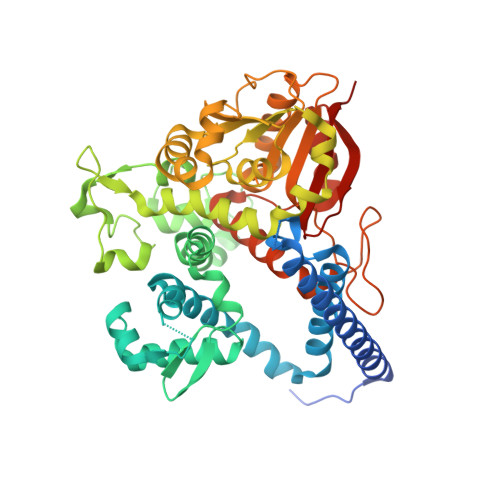Characterization and Structural Analysis of Emodin- O -Methyltransferase from Aspergillus terreus.
Xue, Y., Liang, Y., Zhang, W., Geng, C., Feng, D., Huang, X., Dong, S., Zhang, Y., Sun, J., Qi, F., Lu, X.(2022) J Agric Food Chem 70: 5728-5737
- PubMed: 35475366
- DOI: https://doi.org/10.1021/acs.jafc.2c01281
- Primary Citation of Related Structures:
7WH9 - PubMed Abstract:
All O -methylated derivatives of emodin, including physcion, questin, and 1- O -methylemodin, show potential antifungal activities. Notably, emodin and questin are two pivotal intermediates of geodin biosynthesis in Aspergillus terreus . Although most of the geodin biosynthetic steps have been investigated, the key O -methyltransferase (OMT) responsible for the O -methylation of emodin to generate questin has remained unidentified. Herein, through phylogenetic tree analysis and in vitro biochemical assays, the long-sought class II emodin- O -methyltransferase GedA has been functionally characterized. Additionally, the catalytic mechanism and key residues at the catalytic site of GedA were elucidated by enzyme-substrate-methyl donor analogue ternary complex crystal structure determination and site-directed mutagenesis. As we demonstrate, GedA adopts a typical general acid/base (E446/H373)-mediated transmethylation mechanism. In particular, residue D374 is also crucial for efficient catalysis through blocking the formation of intramolecular hydrogen bonds in emodin. This study will facilitate future engineering of GedA for the production of physcion or other site-specific O -methylated anthraquinone derivatives with potential applications as biopesticides.
Organizational Affiliation:
Key Laboratory of National Forestry and Grassland Administration/Beijing for Bamboo & Rattan Science and Technology, Beijing 100102, China.
















